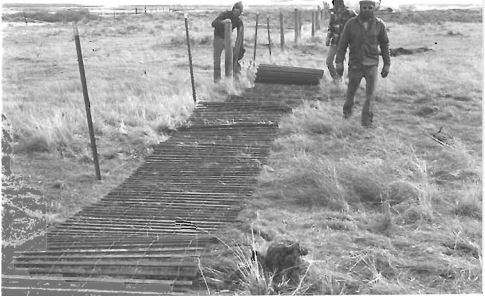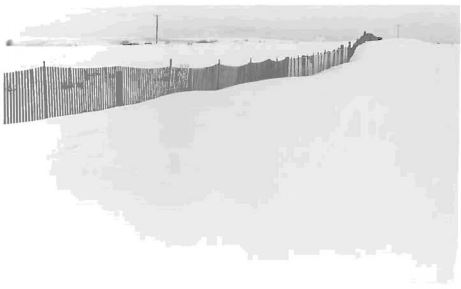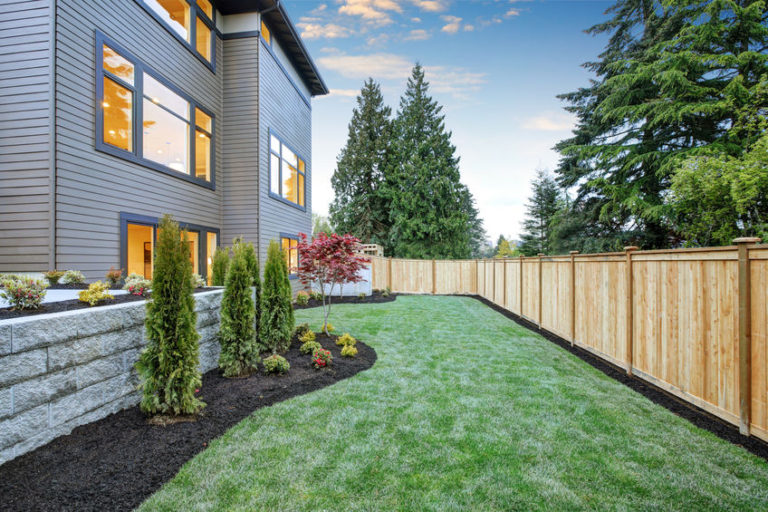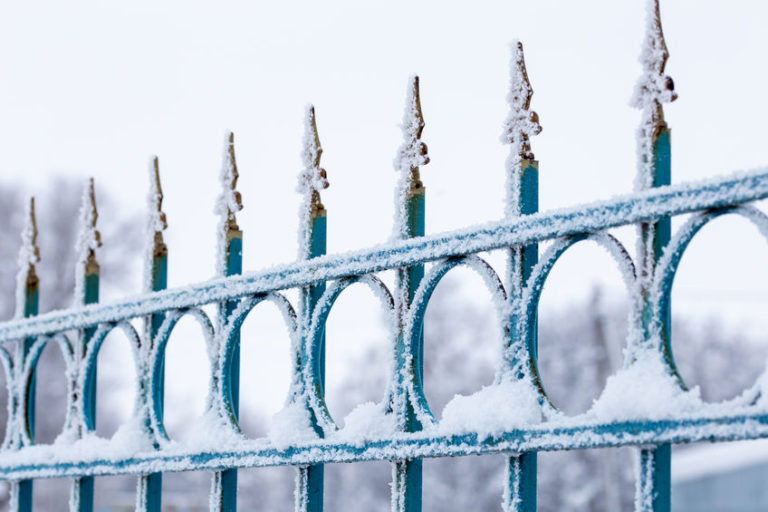Many NJ highways are equipped with wooden snow fences. Their primary function is to prevent snow accumulation on the highways, to reduce snow removal costs, and to provide safer road for the motorist. Wooden snow fences have been used effectively to control the formation of snow drifts.

In July 1991, Ahmed Ardani submitted a report for the Colorado Department of Transportation on a research project exploring the benefits and drawbacks of using synthetic vs wooden snow fence. The final analysis of the report described some important ideas to consider when deciding on what kind of snow fence would be appropriate for the setting and conditions of your situation.
How are snow fences installed?
The installation of the fences begins with the erection of wooden and steel “T” posts every seven feet. The heavy wooden posts were used at either end of the fences mainly for proper tensioning. The fences can be stretched in two ways, using a hand stretcher and a truck. Using a truck is often ideal, because of the ease of its operation and proper stretching capability.
A bottom gap of six inches should be established for the fences. According to experts, leaving a space between the bottom of a fence and the ground surface reduces the tendency for the fences to become buried in the drift. Burial reduces effective fence height, with a commensurate loss in effectiveness, and often cause structural damage to the fence because of the large forces exerted by snow settlement and creep (3). After stretching, the fences were sandwiched between a wooden slat and the flat side of a post. The wooden slat was used to prevent abrasion of the fence by the tie wire.

Performance Evaluation
To properly investigate the performance of the snow fences, it was decided to examine the size and the geometry of their drifts after a heavy snow fall during the winter, and their appearance and integrity during the summer. The investigation was initiated on January 5, 1989 after a heavy snow fall.
All types of snow fences (plastic and the wooden fence) were visually inspected and photograph. The height and length of the drifts behind individual fences were measured using a steel rod.
The amount and the geometry of snowdrifts formed behind all the fences measured to be approximately the same, ranging from 3.5 to 4.5 feet in height and 90 feet in length. The bases of all the fences were nearly clear.
The wooden fence showed a small amount of lateral sagging, however, it was still performing well. Two types of synthetic snow fence were among the best, retaining their original tension with no apparent distress.
The summer evaluation of the snow fences was performed during the first week of August. The primary reason for this investigation was to examine the appearance and the integrity of all the snow fences after the winter months.
Even though synthetic snow fences were quite effective in controlling snow during the winter, they were susceptible to damage by the grazing bulls in the summer. Sections of these fences had been chewed or disturb by the bulls in the area. On occasion, bulls fur were found on the wooden slat indicating that maybe the bulls were scratching their bodies against the fence.
In one case, the fence was abraded by the wire that was used to tie the fence to the pole. However, it is believed that the abrasion could have been prevented if a wooden slat was used to sandwich the fence against the pole. The wooden fence appeared to be in good condition. However, the 6-inch bottom gap that was established for the fence was no longer there. This was caused by the weight of the wooden fence. The wooden fence is approximately four times heavier than the synthetic snow fences. The bottom gap is quite essential in creating long drift (as much as 35 times the height of the fence), and increasing the storage capacity of a fence.
Recommendations and Conclusions
The use of synthetic snow fences for controlling snow drifts looks promising; however, close attention must be paid in selecting a proper site. sites with close proximity to a ranch with grazing bulls may not be suitable for synthetic snow fences. Bulls have tendencies to either lean against the synthetic snow fences or to chew on them.
The snow trapping efficiency of the synthetic snow fences were comparable to wooden fences. The amount and the geometry of the snowdrifts formed behind all the fences were approximately the same, ranging from 3.5 to 4.5 feet in height and 90 feet in length downstream of the fence.
The synthetic snow fences were much easier to install than the wooden fences, because they were lighter (approximately one-forth of the weight of the wooden fences), and because they stretched easier. The synthetic snow fences require substantially less room to store or to haul. They will not rust or corrode, and they are ultraviolet and heat resistant.
When installing any snow fence the following factors should be considered.
The maximum length of a snowdrift downstream could reach 35 times the height of the fence. Therefor a 4-feet snow fence should be installed 140 feet upwind of a roadway.
A gap of six inches between the bottom of a four-foot fence and the top of the vegetation allows the wind to scour a depression around the fence helping to prevent the fence from becoming buried and losing its efficiency. The optimum bottom gap is equal to 10-15 percent of total fence height ‘( 4) .
The research described in this report was originally commissioned to investigate the effectiveness of synthetic snow fences against the traditional wooden snow fence. The synthetic snow fences were easier to install than the wooden fences because they were lighter (approximately one-fourth of the weight of the wooden fences) and because they stretched easier. They required substantially less room to haul. The snow trapping efficiency of the synthetic snow fences was comparable to that of wooden fences. The result of this study has demonstrated the use of synthetic snow fences as an alternative to the traditional wooden snow fences. However, their installation close to a ranch with grazing bulls is not recommended. Bulls have tendencies to either lean against them or chew on them.



